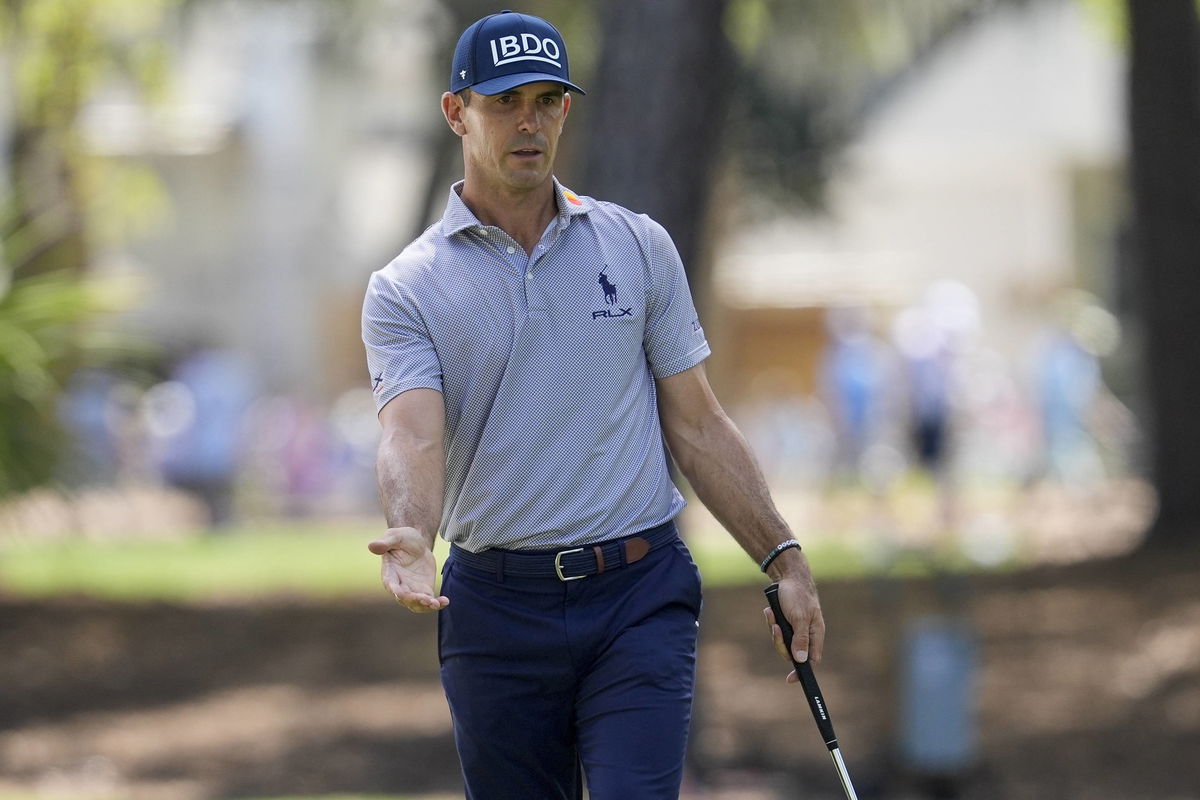
Imago
PGA, Golf Herren RBC Heritage – Second Round Apr 18, 2025 Hilton Head, South Carolina, USA Billy Horschel motions to his ball on seven green during the second round of the RBC Heritage golf tournament. Hilton Head South Carolina USA, EDITORIAL USE ONLY PUBLICATIONxINxGERxSUIxAUTxONLY Copyright: xJimxDedmonx 20250418_jla_db2_071

Imago
PGA, Golf Herren RBC Heritage – Second Round Apr 18, 2025 Hilton Head, South Carolina, USA Billy Horschel motions to his ball on seven green during the second round of the RBC Heritage golf tournament. Hilton Head South Carolina USA, EDITORIAL USE ONLY PUBLICATIONxINxGERxSUIxAUTxONLY Copyright: xJimxDedmonx 20250418_jla_db2_071
Billy Horschel has been around long enough to see the PGA Tour change a lot over the past 15 years. One of the biggest shifts lately has been the rise of Signature Events. Smaller, high-profile tournaments with massive prize money. The setup, however, has stirred up some frustration among players. Lucas Glover recently admitted he’s fed up with how hard it’s become for some to get into these events, even saying he doesn’t want to talk to Brian Rolapp anymore.
Watch What’s Trending Now!
With only 100 golfers guaranteed to keep their cards this year, the rest are left fighting for scraps. And, starting in 2026, there will be nine of these, each offering $20 million and featuring only about 70 players, mostly those sitting near the top of the FedExCup standings. So, Horschel seems to feel the same way as Glover. In a chat with Fried Egg Golf, the 38-year-old emphasized how the Tour needs to do a better job of keeping things fair.
On X, golf analyst @JosephLaMagna from The Fried Egg Golf posed a sharp question to Horschel, who’s been amid his comeback since his right hip surgery: “We’re now a couple years into the Signature Event model. If you had full control over the PGA Tour, what tweaks would you make to the structure of the Tour?”
ADVERTISEMENT
Horschel’s answer was straight to the point. “Ideally I think you have about 25 events per year, and I would make every event equal,” he said. He explained that bigger cities like Chicago, New York, or Los Angeles naturally attract higher purses and attention, but that shouldn’t create inequality among tournaments. “When you go to bigger markets… they are going to put up more money because it’s a bigger market and they want to be the premier event.”
.@JosephLaMagna: “We’re now a couple years into the Signature Event model. If you had full control over the PGA Tour, what tweaks would you make to the structure of the Tour?”
Billy Horschel: “Ideally I think you have about 25 events per year, and I would make every event equal.… pic.twitter.com/6A6BzoG4vu
— Fried Egg Golf (@fried_egg_golf) October 20, 2025
Horschel substantiated his vision clearly, adding, “But I say we go to a 25-event schedule where we try to make every event the same. Every tournament has a 120-man field. It’s a smaller tour, but it gives every member of the PGA Tour the full ability to play all 25 events. From the time I got on Tour, I’ve always said that it’s weird to not be guaranteed a spot in every open PGA Tour event as a member of the Tour”.
ADVERTISEMENT
He finished with a practical pitch to the Tour itself: “If there is a way to create a tour where every full-status PGA Tour member is guaranteed to play every PGA Tour event that is open, it would benefit both the PGA Tour as an organization and the players themselves.”
Even Erik Van Rooyen aligns with these views. “I strongly believe that the strongest fields are the ones with the most players in them. The guys on the PGA TOUR are so good. It’s so deep. I get that you’ve got the Scotties [Scottie Scheffler] of the world, the Rorys [Rory McIlroy] of the world, and people want to see them, it’s entertaining,” he’d said earlier.
ADVERTISEMENT
Back in August, when Brian Rolapp laid out his vision for the PGA Tour, he promised a major reset, a “clean sheet” approach built around three ideas: parity, scarcity, and simplicity. But as players, fans, and analysts have taken a closer look, especially at the new Signature Events, that promise hasn’t quite lived up to the hype. What was meant to highlight the best talent in golf has instead been called out for being exclusive, inconsistent, and, frankly, a little dull.
The thing is that scarcity and parity clash here. You can’t make the fields smaller and still say everyone has an equal chance. And trying to talk about merit while giving more sponsor exemptions and running no-cut events just doesn’t add up. And sponsor exemptions and how they’re handed out only make matters muddier.
Each event lets organizers hand out a few invites, typically four from sponsors and one host exemption for player-hosted tournaments. The idea is to bring in star players, local favorites, or someone in hot form. But in reality, it’s become a sore spot for many on the Tour.
For example, Rickie Fowler got six sponsor exemptions in 2025, despite finishing 108th in the previous FedExCup rankings, well outside automatic eligibility. Almost half of his season points came from those invites. Jordan Spieth had five exemptions and racked up a big chunk of his points the same way. Meanwhile, other players grinding every week missed out. No wonder that these events come off more like a members-only club.
ADVERTISEMENT
Top Stories
Jordan Spieth Breaks Silence on ‘Exemptions’ Backlash After Career Hit All-Time Low

Cameras Catch Rory McIlroy Lost in the Bushes Amid Disastrous Australian Open Round

Top 3 Shots That Deserve a Second Look From the Hero World Challenge R1

Rose Zhang Can’t Stop Laughing After Nearly Injuring Influencer With Golf Shot

Colt Knost Fires 2-Word Reply to Shut Down False Rumors Over His Amateur-Status Move

Fewer Events, Greater Purpose. The Modern Shift in the PGA Tour’s Calendar
While the PGA Tour assesses its future, its best players including four-time major winner Rory McIlroy, are demanding a tighter, more astute schedule. Fewer tournaments, he feels, would regain prestige and player equilibrium, describing the current excess as “diluting impact.” His vision shared by others such as Jason Day and Viktor Hovland is of a new golf era where the season is about quality rather than quantity.
McIlroy recently informed ESPN, “I think 47 or 50 tournaments a year is definitely too many. To scale it back and have a little more scarcity, like the NFL, might not be a bad thing.” His observation reflects a developing attitude among top players who believe the calendar needs to favor performance over stamina. Jason Day concurred, positing that a reconfigured schedule might “give guys time to recover, to train properly, and show up ready to win — not just survive.”
ADVERTISEMENT
For the new generation, the value of golf is not in the quantity of tee times, but in the significance of each. A condensed, more casual season might provide the equilibrium Horschel hopes for restoring hope while maintaining greatness.
ADVERTISEMENT
ADVERTISEMENT
ADVERTISEMENT

.png?w=50&h=50)
